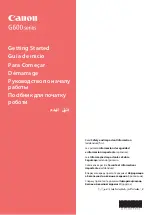
T480 Unicode and Fonts
T480
Programmer’s Guide
Page
200
Rev A
100-14362
Character Definition
True Type and Stroke fonts are designed as a complete font with character cell size and
character position in the cell based on the overall font design. Typical the characters are
defined as vectors and stored as coordinates on a character cell grid. The grid is in an
arbitrary design unit and may be up to 4096 units on a side.
In most systems character sizes is specified as a point size where the point size refers to
the character height. The character width is typically variable and designed to produce
the optimal appearance. The font rendering system must take the requested point size
and generate a character based on the original design units and produce a character
that is the correct size and position for the printer.
In most font designs, the vertical point size includes white space between lines. The font
designer defines the height of the character cell in design units for all characters then
defines a character origin that will be used for all the characters in the font. The
designer then defines individual character sizes based on how the font is supposed to
look and all the characters that are to be included. Characters are then positioned in the
cell based on this origin. All characters in the font are then based on the same rules.
The white space between lines in defined to be above the character.
The information available at print time is listed above. The complete cell is not provided,
only the escapement, black width and depth and the x and y offsets to the origin are
available. The printer cannot arbitrarily shorten the cell height that was defined by the
font designer even though the provided character may fit in a smaller space. Using
these rules, may result in characters that at first appear too small with excessive white
space between lines, however this is how the font was designed. The printer must allow
the minimum line spacing based on the point selection and not on the actual character
height of any given characters. Second guessing the font designer can have very bad
results when character are encountered that use the full cell.
Asian fonts require slightly different rules for character placement and are not as one
would expect. The Asian ideographs are positioned on center of mass, rather than on a
baseline. The Latin data in Asian typefaces must be built on the same rules. As a result,
when Latin characters are scaled the expected baselines do not line up. Asian fonts are
















































